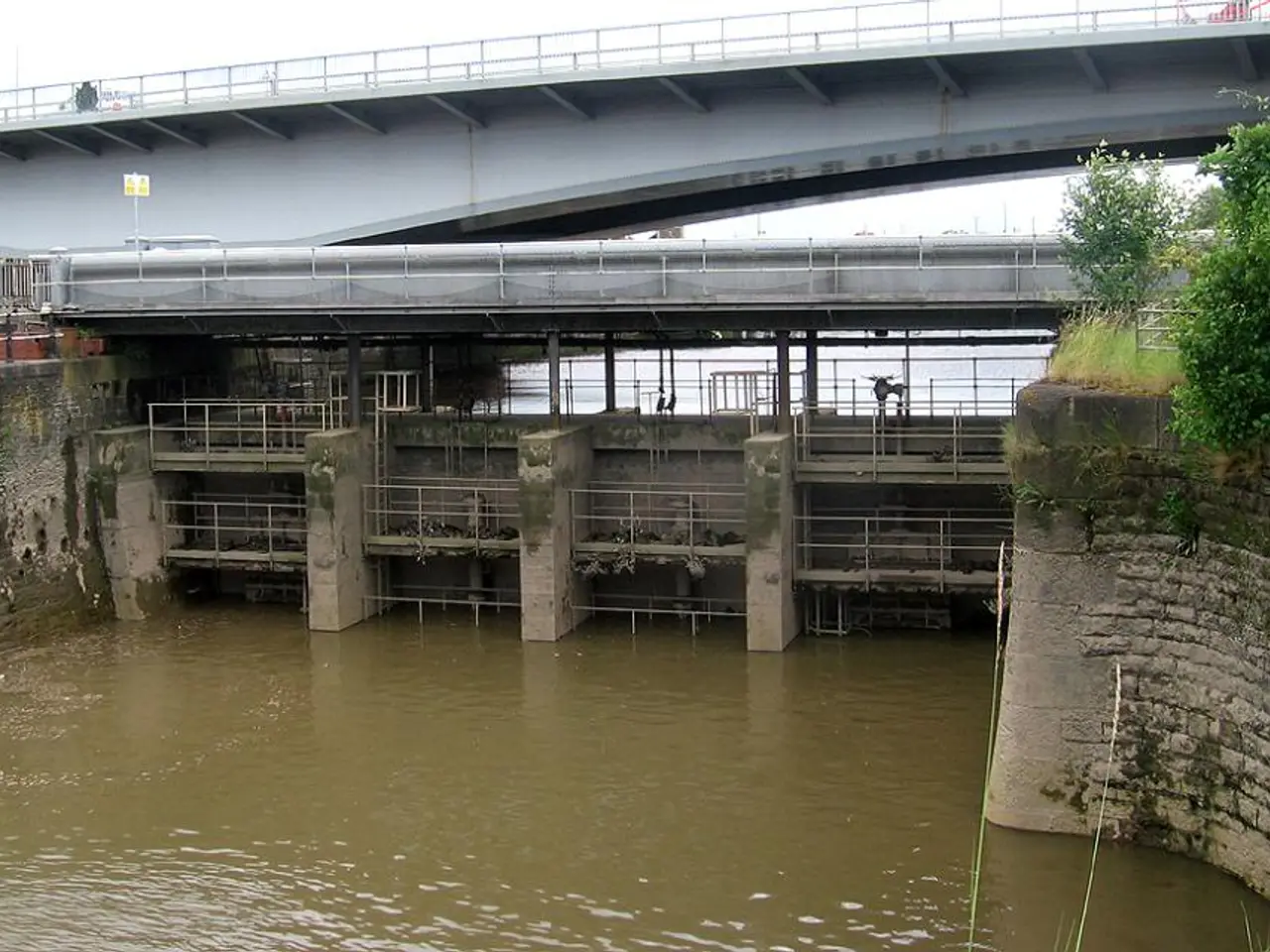Beneath the surface of Tokyo, a secret urban center captivates architecture enthusiasts
The Kasukabe Underground Discharge Channel, officially known as the Metropolitan Outer Area Underground Discharge Channel (G-Cans Project), is a remarkable flood control infrastructure located in Kasukabe, Saitama Prefecture, near Tokyo. This colossal underground facility is recognised as the world's largest underground floodwater control facility [1][2].
A Necessity Born out of Historical Flooding Risks
The project was constructed to address the flood risks posed by the Tokyo metropolitan area's susceptibility to heavy rainfall and typhoons. Historically, Kasukabe was primarily farmland, and flood damage was minimal on a national scale. However, as urbanization increased, the potential for severe flooding grew, leading to the development of this massive underground river system [2][3][4].
An Underground River System Designed to Protect Urban Areas
The facility serves as a massive underground drain and reservoir, approximately 50 metres below ground. It channels excess floodwater through tunnels and massive silos to prevent surface flooding [2][3][4]. Innovative engineering features, such as floodwater turbines powered by modified jet aircraft engines, enable effective water movement and drainage even during extreme weather conditions [4].
A Tourist Attraction and Engineering Marvel
The Kasukabe Underground Discharge Channel has become a point of interest for engineering and architecture enthusiasts. It is accessible to tourists and visitors, often included as a unique destination in Kasukabe travel itineraries. The vaulted ceilings and dim lighting resemble a submerged Roman temple, adding to its allure [1].
Nearby attractions in Kasukabe, such as the Crayon Shin-chan shop near Kasukabe Station, complement the visit, allowing tourists to explore both the technological marvel and local culture [5]. Some visitors view the underground network as a work of art, while others see it as a symbol of Japan's unique relationship with natural disasters [1].
A Vital Infrastructure and a Testament to Human Resilience
The Kasukabe Underground Discharge Channel has proven its effectiveness time and again, preventing estimated damages of over 150 billion yen since its full operation in 2006 [1]. Its construction in a densely populated city, built on sometimes unstable zones, presents a significant challenge. Yet, it stands as a colossal sanctuary and a tribute to the ancestral mastery of water [1].
In the face of natural disasters, the underground network in Kasukabe serves as a symbol of anticipation, preparation, and humility. Without it, entire neighborhoods and critical infrastructure in Tokyo would have been flooded [1]. The Kasukabe Underground Discharge Channel is a testament to human resilience and innovation, blending practicality with intrigue to create a unique tourist attraction in Tokyo's landscape.
[1] The Japan Times. (2019, May 25). Tokyo's underground flood control system: A tour of the world's largest underground river. Retrieved from https://www.japantimes.co.jp/culture/2019/05/25/travel/tokyos-underground-flood-control-system-tour-worlds-largest-underground-river/
[2] The Asahi Shimbun. (2018, September 14). The G-Cans project: Tokyo's underground flood control system. Retrieved from https://www.asahi.com/ajw/articles/AJ201809140065.html
[3] The Mainichi. (2018, September 13). Tokyo's underground flood control system: The world's largest underground river. Retrieved from https://mainichi.jp/english/articles/20180913/p2g/00m/0na/014000c
[4] The Guardian. (2016, September 13). Tokyo's giant underground flood control system: a colossal sanctuary for water. Retrieved from https://www.theguardian.com/cities/2016/sep/13/tokyos-giant-underground-flood-control-system-a-colossal-sanctuary-for-water
[5] Tokyo Cheapo. (n.d.). Kasukabe: A Hidden Gem in Saitama Prefecture. Retrieved from https://www.tokyocheapo.com/things-to-do/saitama/kasukabe/
- After exploring the Kasukabae Underground Discharge Channel, a traveler might find a contrasting change of pace in home-and-garden settings by visiting the Crayon Shin-chan shop near Kasukabe Station.
- Although the Kasukabe Underground Discharge Channel is acclaimed for its engineering marvel and role in flood control, its impact extends beyond practicality into the realm of luxury and lifestyle, making it a popular destination for unique travel itineraries.




